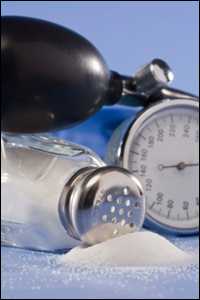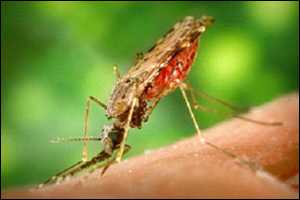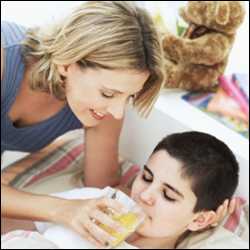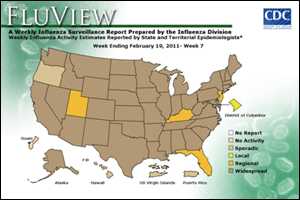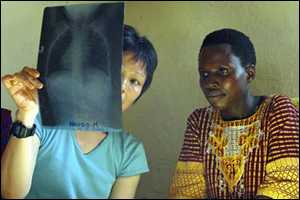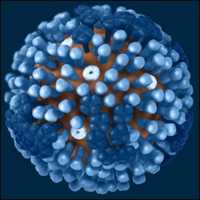Story Ideas - 2011
Nov

Know the facts: Black women die from breast cancer more often than whites
The rate of women getting or dying from breast cancer varies by race. Breast cancer is the most commonly diagnosed cancer and second most common cause of cancer deaths among black women. At the time of diagnosis, blacks more often present with a higher stage of cancer. Although the death rate for breast cancer has declined over the past 20 years, the rate of decline has been slower for blacks. Black women are 1.4 times more likely to die from breast cancer than white women. Compared to whites, blacks have a lower rate of cancer survival for each stage of breast cancer at diagnosis. These differences have been partially explained by differences in types of tumors and access to treatment services.
All women are at risk for breast cancer, but getting regular mammograms can lower the risk of dying from breast cancer. Mammograms, an X-ray of the breast, are the best method to detect breast cancer early when it is easier to treat and before it is big enough to feel or cause symptoms. Having regular mammograms can lower the risk of dying from breast cancer. The U.S. Preventive Services Task Force has established the following guidelines for screening, but you should discuss how often you should get screened with your doctor: If you are age 50 to 74 years, be sure to have a screening mammogram every two years. If you are age 40–49 years, talk to your doctor about when and how often you should have a screening mammogram.
CDC's National Breast and Cervical Cancer Early Detection Program provides breast and cervical cancer screenings and diagnostic services to low-income, uninsured, and underinsured women across the United States. Let your readers know they can search for free and low-cost screenings in their state!
Related links:

Learn More, Breathe Better: Preventing COPD
Encourage your readers to join the Centers for Disease Control and Prevention and the National Heart, Lung, and Blood Institute this November for Chronic Obstructive Pulmonary Disease (COPD) Awareness Month. COPD refers to a group of diseases that includes emphysema, chronic bronchitis, and in some cases, asthma. It affects more than 12 million Americans and chronic lower respiratory diseases (primarily COPD) are the third leading cause of death in the United States. In the United States, tobacco use is a key factor in the development and progression of COPD, but asthma, exposure to air pollutants in the home and workplace, genetic factors, and respiratory infections also play a role.
COPD cannot be cured, but it can be prevented! Early detection is the key. A simple test can be used to measure pulmonary function and detect COPD in anyone with breathing problems. Steps to prevent COPD include avoiding tobacco use or inhaling tobacco smoke, avoiding home and workplace air pollutants, and respiratory infections to prevent early development of COPD.
Related links:

Back to the Basics: Preventing the Spread of Foodborne Disease this Holiday Season
CDC estimates that each year roughly one out of six Americans (or 48 million people) get sick, 128,000 are hospitalized, and 3,000 die from foodborne diseases. In this year alone, the CDC has engaged with state and local public health partners in the investigation of 165 outbreaks and clusters of illness. Most foodborne outbreaks are local and many result from food being contaminated when it is being prepared or served by unwashed or improperly washed hands. Scientific evidence shows that preventing illness begins with the basics.
Help keep your readers informed and safe during this holiday season by sharing the following safety tips with them.
- Clean. Wash hands, cutting boards, utensils, and countertops.
- Separate. Keep raw meat, poultry, and seafood separate from ready-to-eat foods.
- Cook. Use a food thermometer to ensure that foods are cooked to a safe internal temperature: 145°F for whole meats (allowing the meat to rest for 3 minutes before carving or consuming), 160°F for ground meats, and 165°F for all poultry.
- Chill. Keep your refrigerator below 40°F, and refrigerate food that will spoil.
- Check your steps at http://www.foodsafety.gov/keep/basics/index.html
- Report suspected illness from food to your local health department.
- Don't prepare food for others if you have diarrhea or have been vomiting.
- Be especially careful when preparing food for children, pregnant women, those in poor health, and older adults.
Related links:

You Can Control Your Asthma!
Asthma is a chronic inflammatory disorder of the airways characterized by episodic airflow obstruction, airway hyper-responsiveness, and underlying inflammation. Control of asthma requires appropriate diagnosis, effective use of medications, knowledge and understanding of the causes and consequences of the disease, and modifications of environmental exposures and behaviors that may negatively impact the disease. You can provide your readers with information on potentially effective interventions for asthma control, including methodology for identification of the interventions, results, lessons learned, information on the interventions themselves, a bibliography of reviewed literature, and case studies of several interventions.
Please share with your readers that home-based multi-trigger, multi-component interventions with an environmental focus are effective means of improving overall quality of life and productivity in children with asthma. For more information visit the Guide to Community Prevention Services website.
The benefits of controlling asthma includes fewer symptoms such as wheezing or coughing, better sleep, less missed work or school, participation in more physical activities, and fewer trips to the hospital. Be informed, take action and remember that you can control your asthma!
Related links:

Help Your Community Become a Healthier Place to Live, Work, and Play
Did you know chronic diseases affect almost 50 percent of Americans and account for seven of the 10 leading causes of death in the United States? CDC’s Healthy Communities Program works with communities through state and national partnerships to improve community leader's skills and commitments of establishing, advancing, and maintaining effective population-based strategies that reduce the burden of chronic disease and achieve health equity.
Through this program, communities are able to implement policies that sustain environmental and systems changes that address the major risk factors—tobacco, physical inactivity, and unhealthy eating. Learn more about creating healthier communities and achieving health equity by visiting the following web sites:
Related links:
Dec
World AIDS Day
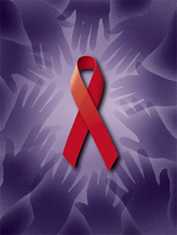
Worldwide, there are 34 million people living with HIV, and according to UNAIDS, approximately 2.7 million new infections occurred in 2010. In the United States, nearly 1.2 million people are living with HIV and an estimated 50,000 new HIV infections occur each year. December 1st marks World AIDS Day, the day to raise awareness of the global impact of HIV/AIDS. This day also recognizes the success to date of global and domestic programs and the number of lives saved.
CDC is committed to saving even more lives. As a science-based public health and disease prevention agency, CDC provides support to nearly 80 countries to strengthen their national HIV programs and build sustainable public health systems through the President's Emergency Plan for AIDS Relief (PEPFAR). CDC works side-by-side with Ministries of Health in these countries and with other partners to implement sustainable HIV/AIDS interventions, and to measure their effectiveness in reducing infections and deaths from HIV/AIDS.
Within the U.S., CDC is implementing High-Impact Prevention in support of President Obama’s National HIV/AIDS Strategy, which guides the nation’s HIV prevention efforts for combating the epidemic. High-Impact Prevention is designed to maximize the impact of prevention efforts for all Americans at risk for HIV infection, including gay and bisexual men, communities of color, women, injection drug users, transgender women and men and youth. By using combinations of scientifically proven, cost-effective and scalable interventions, CDC can target the right populations in the right geographic areas -- making every prevention dollar count.
World AIDS Day is a time to remember the devastating toll this disease has taken – and continues to take – on people in the United States and around the world. It is also a day to celebrate the strides we have made in preventing HIV, and look ahead to the work we still have to do.
HIV testing should be a routine part of healthcare. CDC recommends:
- All adults and adolescents get tested at least once.
- People at high risk for HIV get tested more often. Those at the highest risk (including Injection-Drug Users and their sex partners, persons who exchange sex for money or drugs, sex partners of HIV-infected persons and heterosexuals or men who have sex with men who themselves or whose sex partners have had more than one sex partner since their most recent HIV test) get tested at least annually.
- Women get tested during each pregnancy.
Related Links:
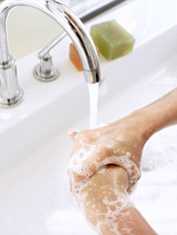
Be Healthy: National Handwashing Awareness Week is December 4-10
Keeping hands clean through improved hand hygiene is one of the most important steps we can take to avoid getting sick and spreading germs to others. In honor of National Handwashing Awareness Week, here are some tips to stay healthy and clean by washing your hands.
How to wash hands:
- Wet your hands with clean running water and apply soap.
- Rub hands together to make a lather and scrub all surfaces.
- Continue rubbing hands for 20 seconds. Need a timer? Hum the "Happy Birthday" song from beginning to end twice.
- Rinse hands well under running water.
- Dry your hands using a clean towel or air dry them.
When to wash hands:
- Before, during, and after preparing food
- Before eating food
- Before and after caring for someone who is sick
- After using the toilet
- After changing diapers or cleaning up a child who has used the toilet
- After blowing your nose, coughing, or sneezing
- After touching an animal or animal food or waste
- After touching garbage
If soap and water are unavailable, use an alcohol-based hand sanitizer that contains at least 60% alcohol to clean hands, and wash hands with soap and water at the first opportunity. Hand sanitizers are not effective against all types of germs, and they do not work well when hands are visibly soiled.
Related Links:

Eating Healthy and Be Active During the Holidays
With balance and moderation, you can enjoy the holidays the healthy way. Choose fresh fruit as a festive and sweet substitute for candy. Select just one or two of your favorites from the host of tempting foods. Find fun ways to stay active, such as dancing to your favorite holiday music. Be active for at least 2½ hours a week. Help kids and teens be active for at least 1 hour a day. Following holiday celebrations, thoughts often turn to the New Year and getting in shape. The federal2008 Physical Activity Guidelines for Americans can guide and motivate you to get active. Regular physical activity over months and years produces long-term health benefits and reduces the risk of many diseases. Staying in control of your weight contributes to good health now and as you age. So this holiday season, be aware of what you’re eating and stay physically active.
Related Links:

Drink More Water
Getting enough water every day is important for your health. Healthy people meet their fluid needs by drinking when thirsty and drinking with meals. Most of your fluid needs are met through the water and beverages you drink. However, you can get some fluids through the foods that you eat. For example, broth soups and foods with high water content such as celery, tomatoes, or melons can contribute to fluid intake.
Water can help your body in numerous ways. It can help keep your temperature normal, lubricate and cushion joints, protect your spinal cord and other sensitive tissues, and get rid of wastes through urination, perspiration, and bowel movements.
Your body is always in need of water when you’re in hot climates, being physically active, running a fever, or having diarrhea or vomiting. If you think you are not getting enough water, these tips may help:
- Carry a water bottle for easy access when you are at work of running errands.
- Freeze some freezer safe water bottles. Take one with you for ice-cold water all day long.
- Choose water instead of sugar-sweetened beverages. This can also help with weight management. Substituting water for one 20-ounce sugar sweetened soda will save you about 240 calories.
- Choose water when eating out. Generally, you will save money and reduce calories.
- Add a wedge of lime or lemon to your water. This can help improve the taste and help you drink more water than you usually do.


 ShareCompartir
ShareCompartir



